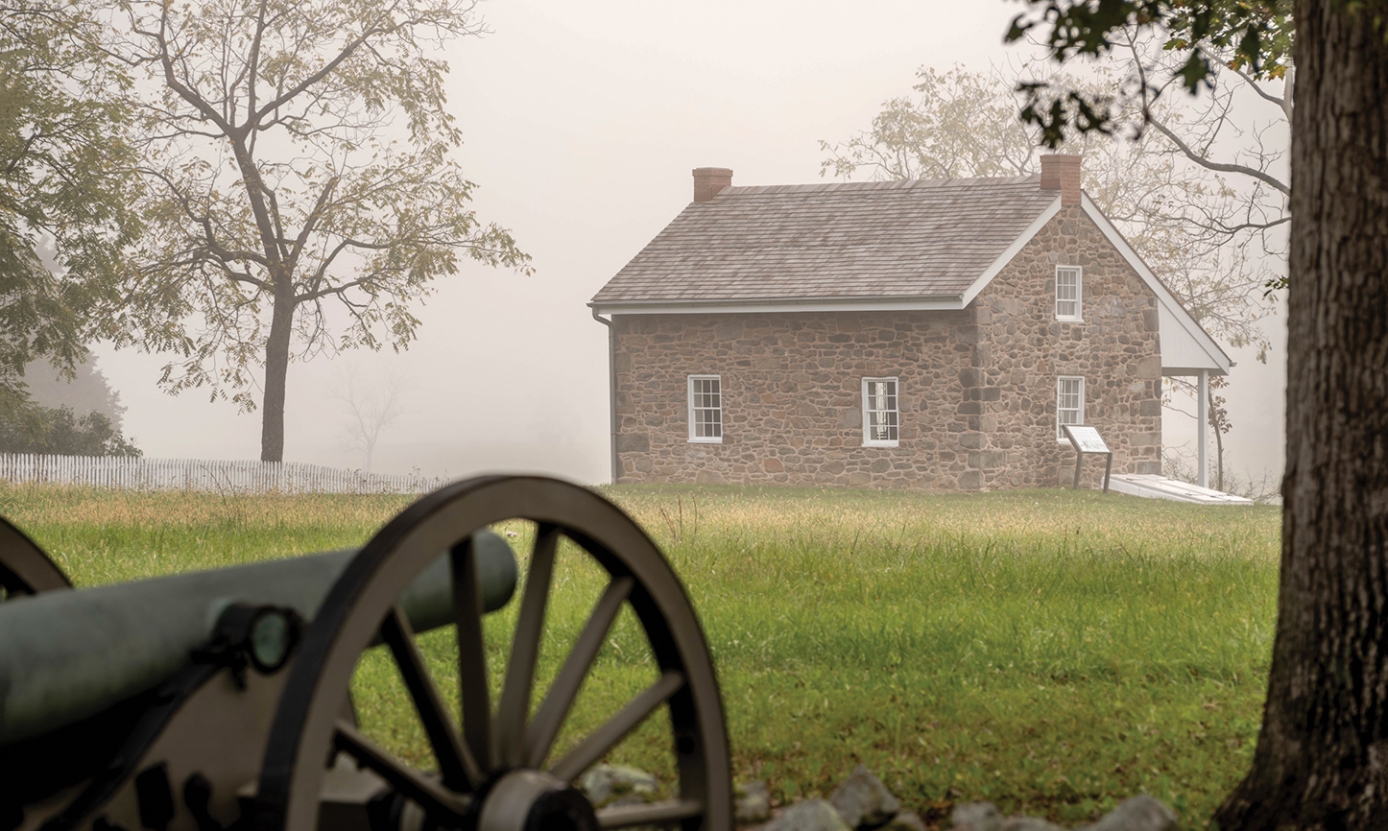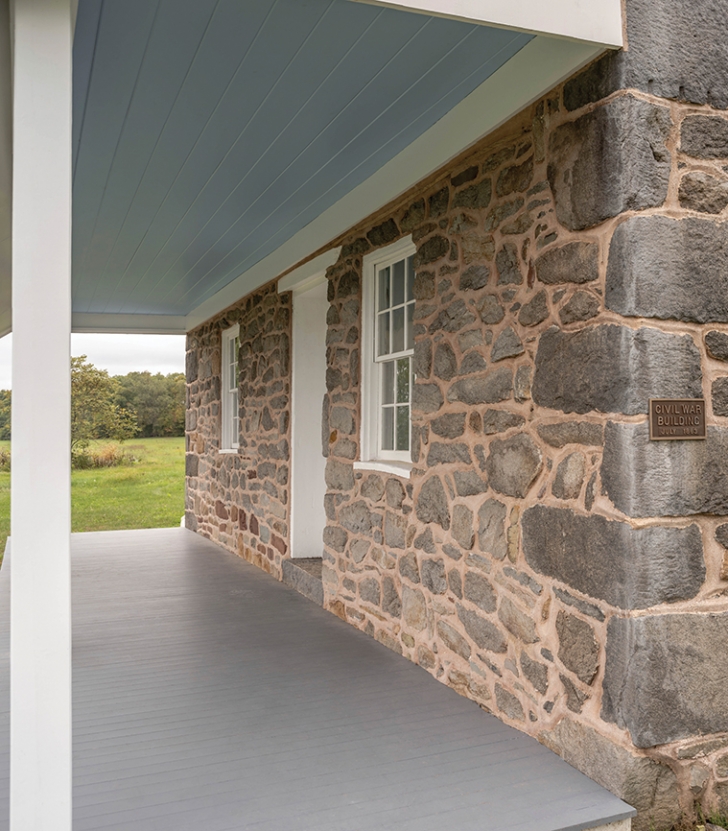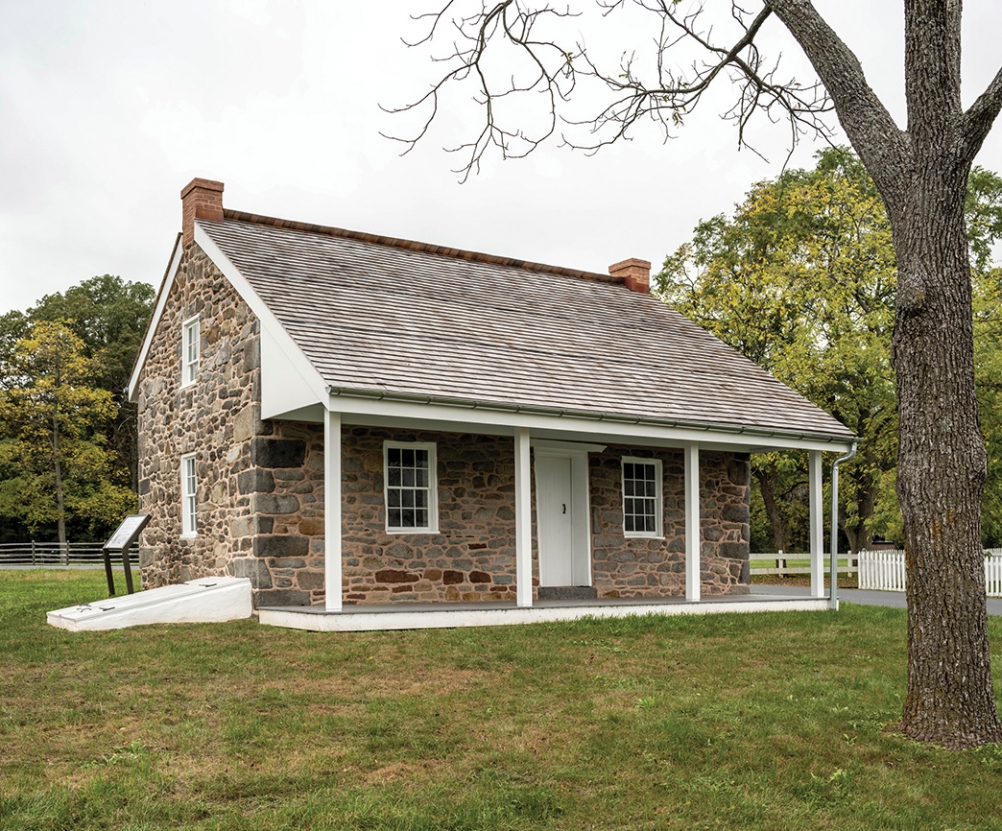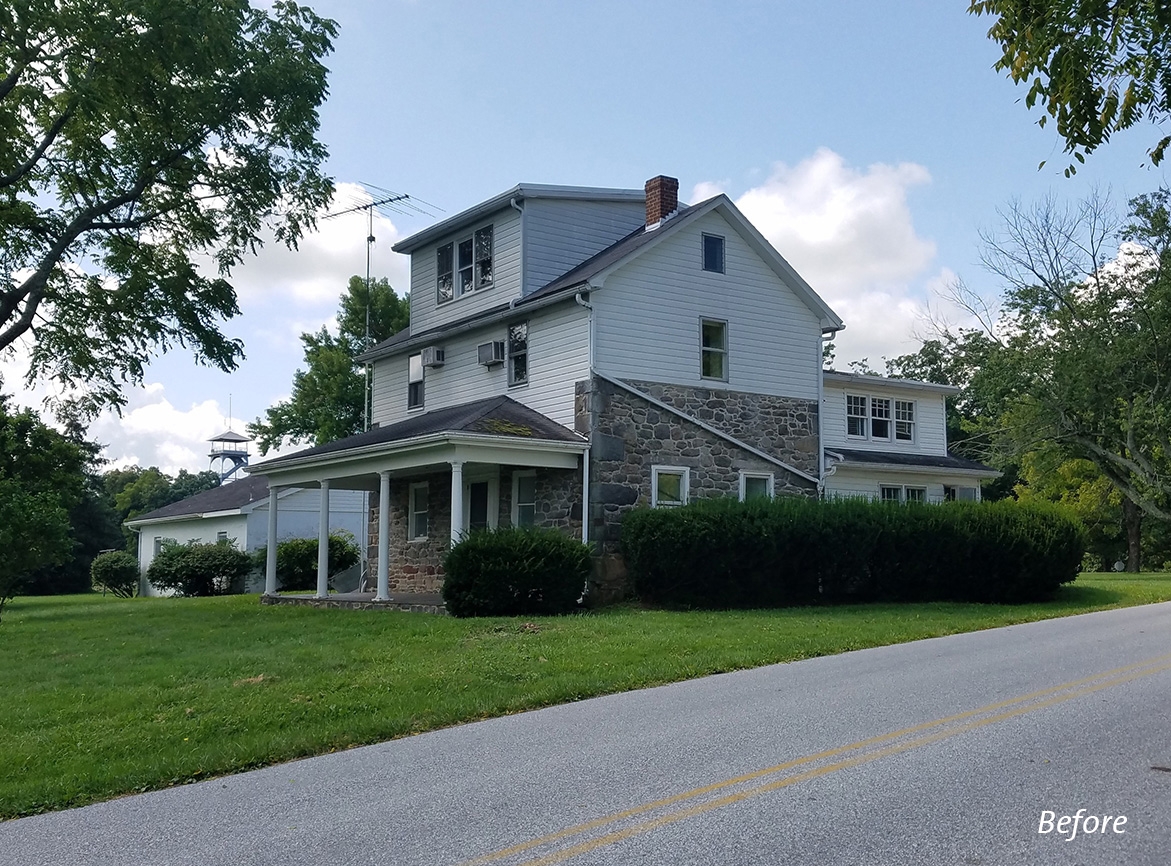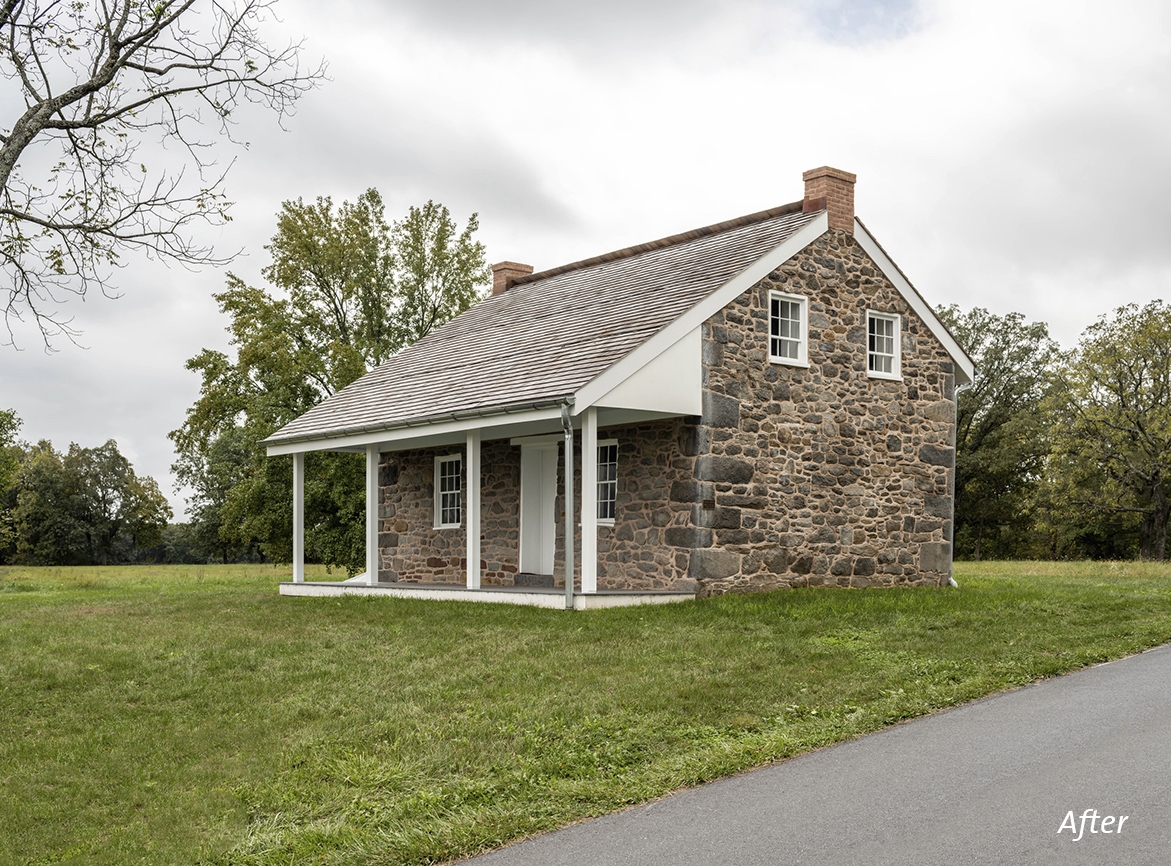From Private Home to Historic Relic
Significant additions were made to the Warfield House during its life as a private home. To return the exterior to its original look, the team removed all post-1863 construction and reconstructed missing components using traditional materials and techniques. We used the masonry walls – one of the only remaining 19th century elements – to develop a recipe and color for masonry repair and repointing.
